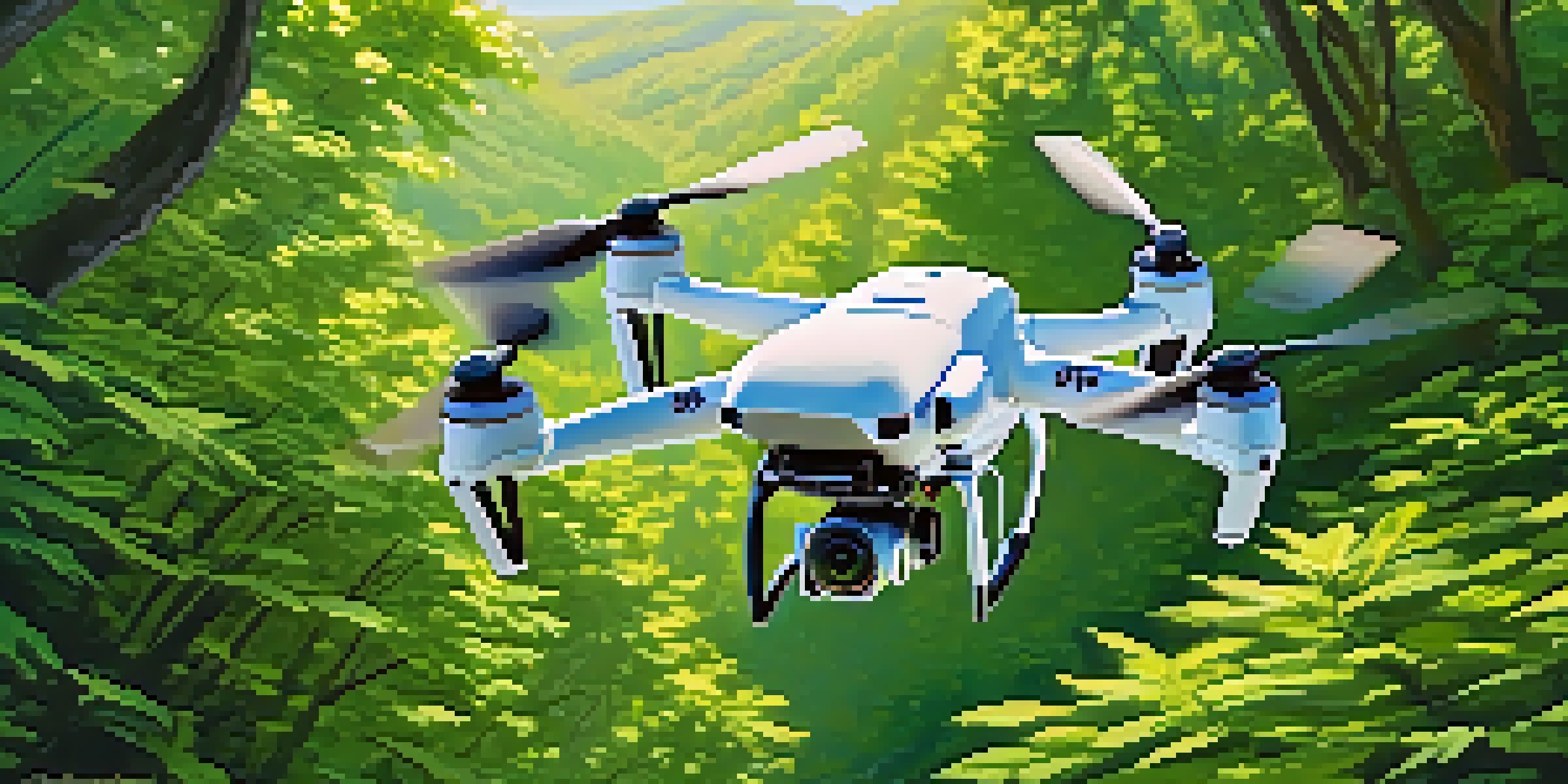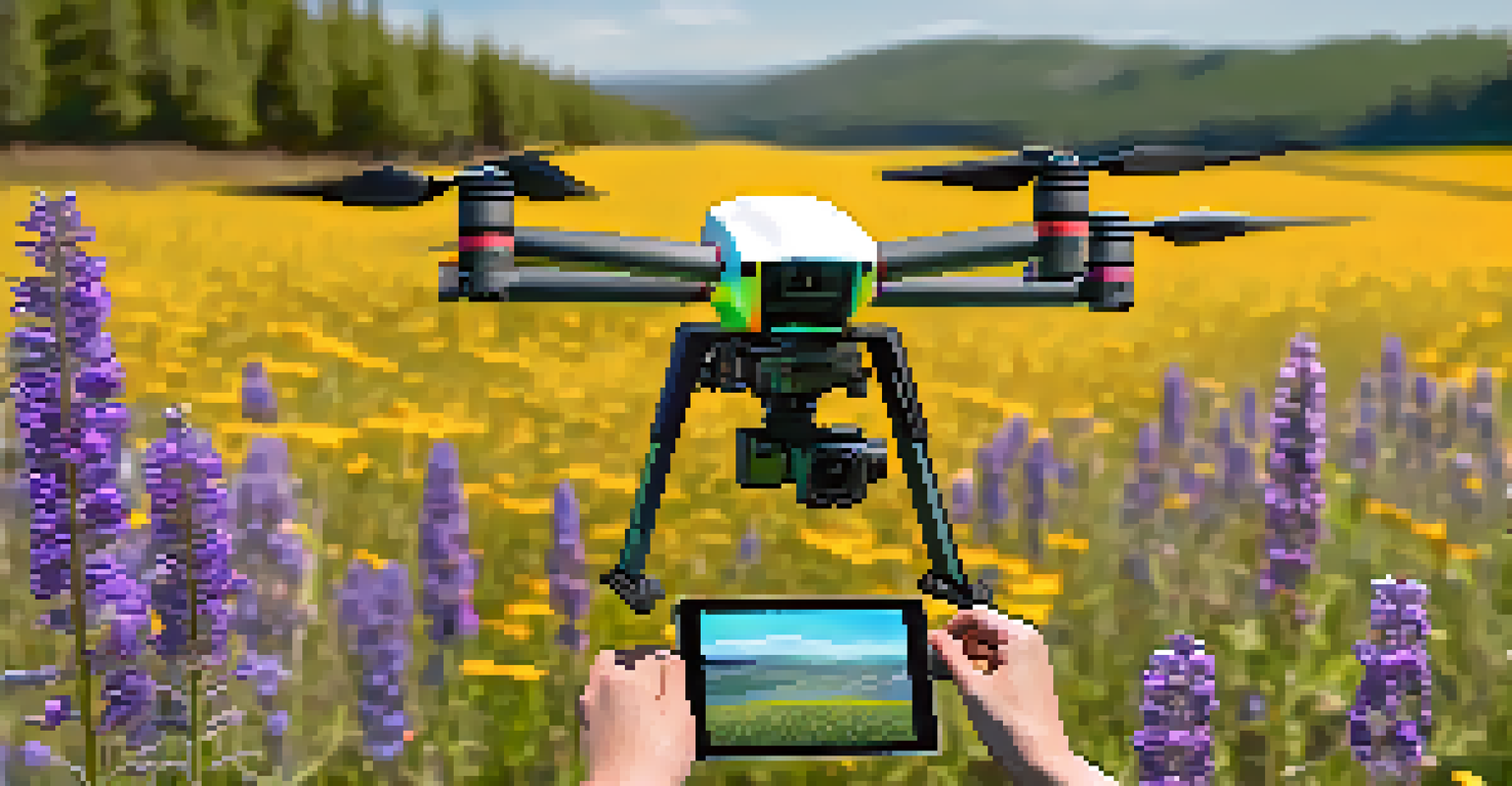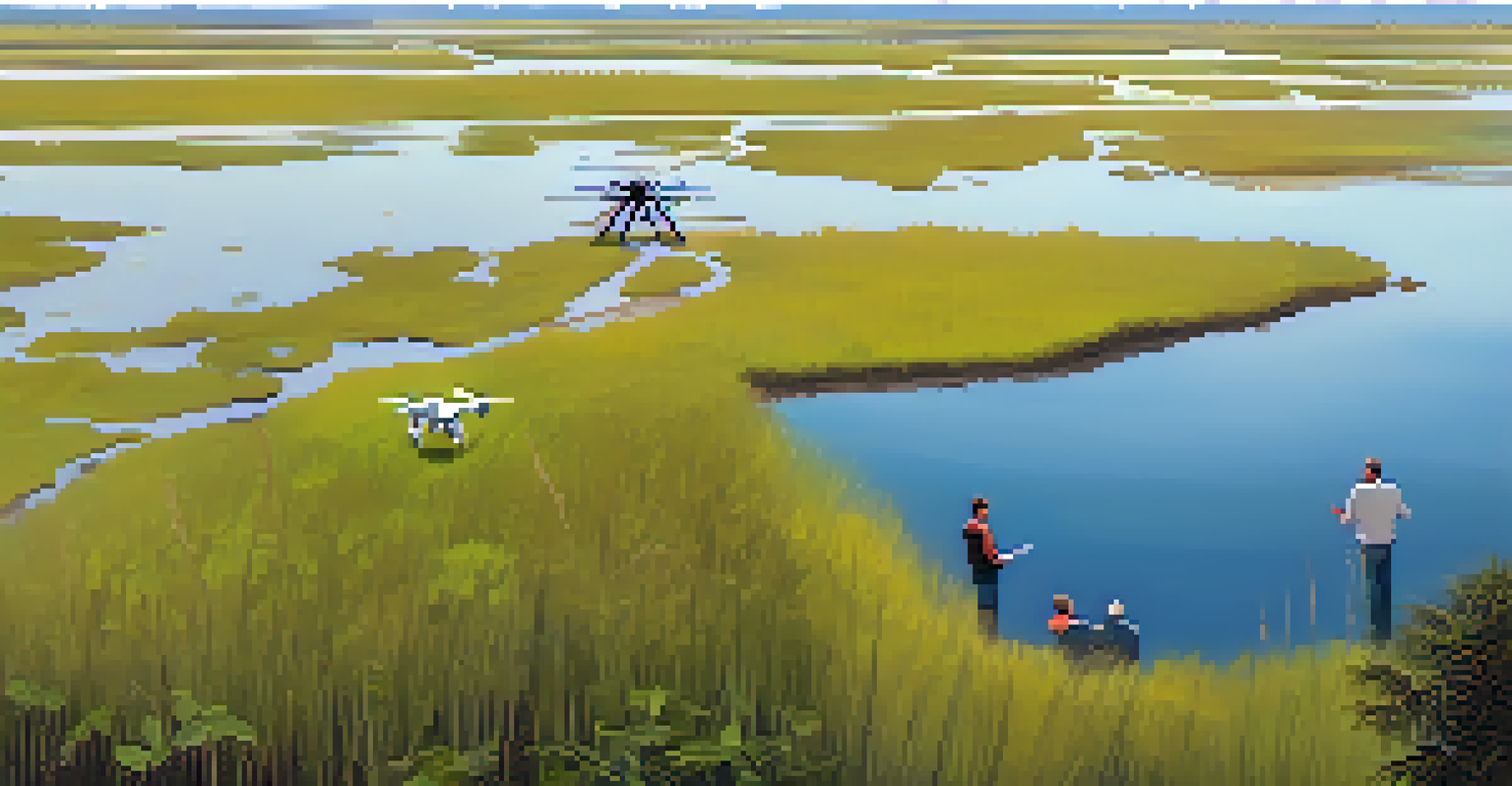Utilizing Drones for Effective Plant Conservation Monitoring

Introduction to Drones in Plant Conservation
Drones are revolutionizing the way we approach plant conservation monitoring. These unmanned aerial vehicles can cover large areas quickly and efficiently, making them a game-changer for ecologists and conservationists. By utilizing drones, we can gather data that was previously difficult or time-consuming to obtain.
Drones are not just tools; they are the eyes in the sky that enable us to understand and protect our planet's delicate ecosystems.
Imagine being able to survey dense forests or inaccessible wetlands without stepping foot on the ground. Drones provide a bird's-eye view, allowing researchers to identify plant species, assess their health, and even spot invasive species that threaten native flora. This capability can lead to timely interventions that protect vulnerable plant populations.
Moreover, the technology behind drones has become increasingly accessible, making it easier for organizations of all sizes to adopt this innovative tool. With the right training, conservation teams can harness the power of drones to enhance their monitoring efforts effectively.
The Technology Behind Conservation Drones
Modern conservation drones are equipped with sophisticated technology that enhances their monitoring capabilities. High-resolution cameras and sensors can capture detailed images and gather vital data about plant health. This information is invaluable for assessing biodiversity and understanding ecosystem dynamics.

For instance, multispectral cameras can detect variations in plant health that are invisible to the naked eye. This technology allows researchers to identify stressed plants and monitor their recovery over time. By analyzing these images, scientists can make informed decisions about conservation strategies.
Drones Enhance Plant Monitoring
Drones provide efficient and non-invasive methods for monitoring plant health and identifying invasive species.
Additionally, advancements in drone automation have made it easier to conduct regular monitoring missions. With the ability to pre-program flight paths, conservationists can save time and resources, ensuring that monitoring is consistent and thorough.
Benefits of Using Drones for Monitoring
One of the most significant benefits of using drones for plant conservation monitoring is efficiency. Drones can quickly cover large areas, significantly reducing the time needed for traditional ground surveys. This efficiency allows conservationists to allocate their resources more effectively.
The future of conservation lies in our ability to embrace technology and innovation, harnessing them to safeguard biodiversity for generations to come.
Another advantage is the minimal disturbance to wildlife and habitats. Unlike ground-based methods, drones can operate from above without disrupting the ecosystems they are monitoring. This non-invasive approach is crucial for protecting sensitive plant species and their surroundings.
Furthermore, the data collected by drones can be analyzed in real-time, providing immediate insights into plant health trends. This rapid feedback loop enables conservationists to adapt their strategies as needed, ensuring that interventions are timely and effective.
Challenges in Drone Implementation
While the benefits of drones in conservation are clear, there are also challenges that organizations must consider. One primary concern is the cost of the technology. Although prices have dropped, acquiring drones and the necessary software can still be a significant investment for some organizations.
Additionally, there is a learning curve associated with flying drones and analyzing the data they collect. Training staff to operate drones safely and effectively is essential, as improper use can lead to accidents or data loss. Ensuring that team members are well-versed in drone operation is crucial for successful monitoring.
Challenges in Drone Usage
Despite their benefits, organizations face challenges such as costs, training needs, and regulatory hurdles when implementing drone technology.
Lastly, regulatory considerations can pose hurdles for drone use. Different regions have varying laws regarding drone flight, which can impact where and how conservationists can operate their drones. Navigating these regulations requires careful planning and coordination.
Case Studies of Successful Drone Use
Several organizations have successfully integrated drones into their plant conservation monitoring efforts, showcasing the technology's potential. One notable example is a project in California's coastal wetlands, where drones helped identify and monitor endangered plant species. The data collected guided restoration efforts and ensured the long-term survival of these plants.
Another inspiring case comes from a national park in Canada, where drones were used to map the distribution of invasive plant species. This information allowed park officials to target their management efforts more effectively, ultimately preserving the park's native flora.
These examples illustrate how drones can make a tangible difference in plant conservation. By leveraging this technology, conservationists can achieve their goals more efficiently and effectively, ultimately leading to healthier ecosystems.
Future Trends in Drone Technology for Conservation
As drone technology continues to evolve, the future of plant conservation monitoring looks promising. Emerging innovations such as artificial intelligence and machine learning are increasingly being integrated with drone operations. These advancements will enhance data analysis capabilities, allowing for more precise monitoring and quicker decision-making.
Additionally, the development of hybrid drones that can operate both in the air and on the ground is on the horizon. This versatility could provide even greater flexibility for conservationists, enabling them to gather data from various perspectives and environments.
Future of Drone Technology
Emerging technologies like AI and hybrid drones promise to further improve the precision and effectiveness of conservation efforts.
Finally, collaboration among tech companies, conservation organizations, and researchers is likely to increase. By working together, stakeholders can share insights and develop best practices for drone use in conservation, ultimately benefiting plant health and biodiversity.
Conclusion: Embracing Drones for Conservation Success
In conclusion, utilizing drones for effective plant conservation monitoring presents a wealth of opportunities for researchers and conservationists alike. The benefits of efficiency, minimal disturbance, and advanced data collection make drones an invaluable tool in the quest to protect our planet's flora. As technology continues to advance, the potential for drones in conservation will only expand.
However, it's essential to acknowledge and address the challenges that come with implementing this technology. By investing in training, navigating regulations, and fostering collaboration, organizations can maximize the impact of drones in their conservation efforts.

Ultimately, embracing drones in plant conservation monitoring empowers us to take significant strides toward preserving our natural landscapes. With the right tools and strategies, we can ensure a brighter future for plant species and their ecosystems.